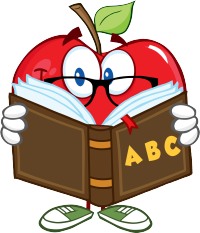Homeschool Reading Curriculum for Kindergarten
Homeschool reading curriculum for kindergarteners lays the foundation for literacy with interactive activities, introducing letters, sounds, and essential sight words. Colorful picture books foster a love for reading. Phonics activities develop word decoding, while oral language, storytelling, and comprehension skills promote future success.
Homeschool Reading Curriculum for Kindergarten Sample
Weeks 1-4: Introduction to Phonics
- Focus on letter recognition & the sounds of the alphabet.
- Introduce one or two letters each week.
- Engage in interactive activities, such as letter crafts and games.
Weeks 5-8: Basic Sight Words
- Introduce common sight words like "the," "and," "is," etc.
- Use fun and interactive methods like flashcards and simple games.
- Start incorporating sight words into short sentences.
Weeks 9-12: Rhyming Words
- Explore rhyming words through nursery rhymes and simple poems.
- Play rhyming games to enhance phonemic awareness.
- Read rhyming books to reinforce the concept.
Weeks 13-16: Beginning Sounds
- Focus on the beginning sounds of words.
- Introduce simple three-letter words.
- Practice sounding out words with a variety of interactive activities.

Weeks 17-20: Interactive Storytelling
- Foster a love for storytelling through picture books.
- Encourage children to retell familiar stories in their own words.
- Use props and puppets to make storytelling interactive and fun.
Weeks 21-24: Emergent Readers
- Introduce simple emergent reader books with repetitive patterns.
- Encourage guided reading sessions with basic comprehension questions.
- Start building confidence in reading short sentences.
Weeks 25-28: Word Families
- Explore word families such as "-at," "-an," "-ig," etc.
- Engage in word family activities and games.
- Create simple word family books together.
Weeks 29-32: Reading Aloud
- Continue reading aloud to the child, exposing them to various genres.
- Discuss the characters, plot, and feelings associated with the stories.
- Encourage questions and observations during reading sessions.
Weeks 33-36: Review and Celebration
- Review critical concepts learned throughout the year.
- Celebrate progress with a "graduation" or special reading-themed activity.
- Provide a list of recommended books for summer reading.
Remember, these are general guidelines, and you can adjust this homeschool reading curriculum for kindergarten based on your child's readiness and interests. Make learning enjoyable, incorporate hands-on activities, and celebrate small victories.

Homeschool Reading Curriculum for Kindergarten Time Spent
For homeschooling kindergarten children, the amount of time spent on reading activities can vary based on the child's attention span, interests, and the specific curriculum being used. Generally, it's recommended to keep learning sessions short and engaging. Here's a suggested breakdown:
Daily Reading Aloud (15-20 minutes):
Begin each day with a read-aloud session. Choose colorful and engaging picture books.
Discuss the story and characters, and encourage questions.
Phonics and Letter Recognition (10-15 minutes):
Introduce new letters or letter sounds through interactive activities.
Use games, songs, or hands-on activities to make it enjoyable.
Sight Words and Basic Vocabulary (10-15 minutes):
Focus on a few sight words each week.
Use flashcards, games, and simple sentences to reinforce vocabulary.
Rhyming and Word Families (10 minutes):
Explore rhyming words and word families through nursery rhymes and activities.
Create simple rhyming games or songs.
Interactive Storytelling and Emergent Readers (15-20 minutes):
Engage in storytelling with interactive elements like props or puppets.
Begin introducing simple emergent reader books, reading together.
Hands-on Reading Activities (10-15 minutes):
Incorporate hands-on activities like creating a letter craft or a simple book.
Use educational apps or online resources for interactive learning.
Outdoor Reading Time (10 minutes):
Take advantage of outdoor settings for reading.
Read books related to nature or explore the neighborhood while practicing letter recognition.
Library or Bookstore Visits (occasional):
Plan occasional trips to the library or bookstore to choose new books.
Encourage the child to explore and pick out books of interest.
When engaging your child in activities, ensuring they are enjoyable and appropriate for their age is essential. Instead of having one long session, it's better to have short, focused sessions spread throughout the day. You can adjust the time based on your child's level of engagement and gradually increase it as their interest and attention span develops.


